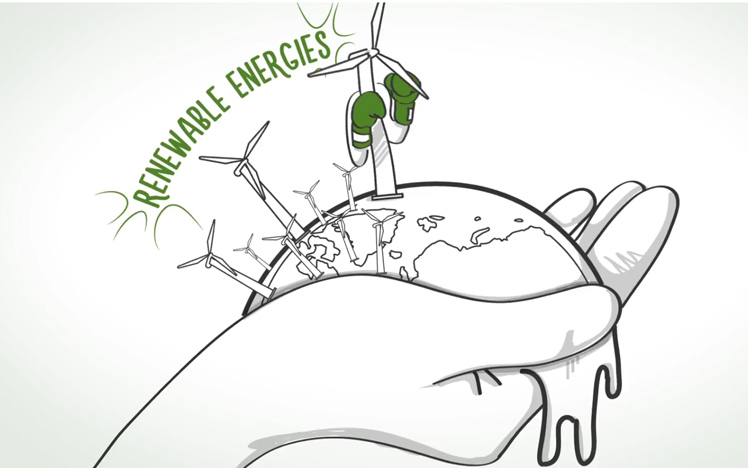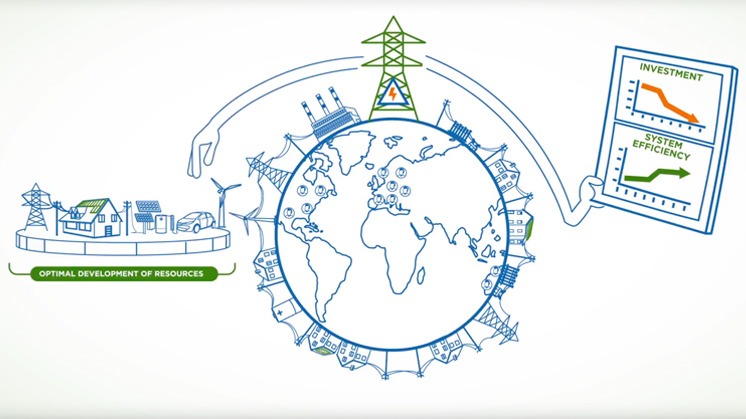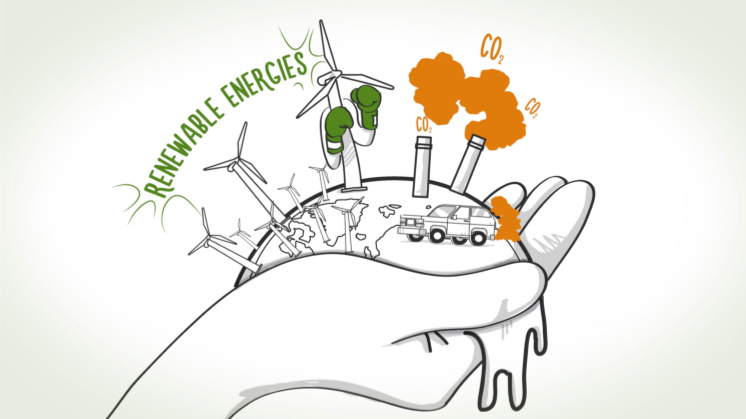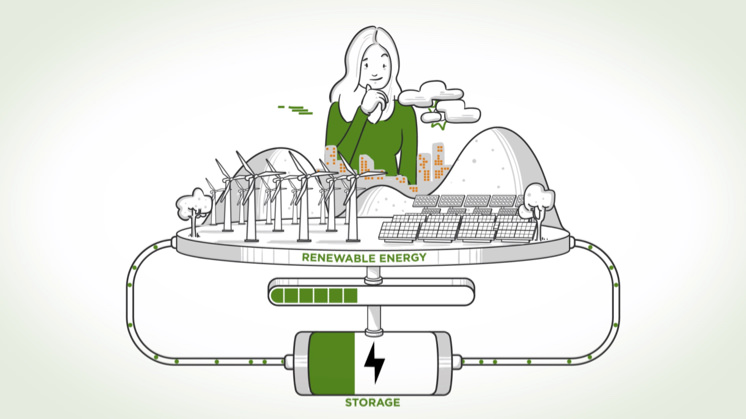Decarbonize the electricity sector
Keys to the decarbonisation of the electricity sector
Decarbonisation Energy storage
Electricity is the most decarbonised energy vector due to its ability to integrate renewable energy sources, and the one that, more than any other, allows for a real increase in energy efficiency.

Renewable facilities do not emit CO2 or other polluting emissions, do not generate waste, they are currently competitive and their cost is expected to continue falling. To make this possible, it is necessary to:
Promote renewable energies
Renewable energies. Video voice transcription [PDF] External link, opens in new window.
Renewable energies are the key tool in the fight against climate change because they do not emit Greenhouse Gases.
Energy sources such as petrol or gas are unable to significantly introduce renewables. Electricity, on the other hand, is the only vector that allows for large-scale input through wind, photovoltaic and hydroelectric plants, helping to reduce emissions, improve energy efficiency and the quality of the air we breathe.
In addition to their positive environmental impact — being free of CO2 emissions, gases harmful to health and waste — renewables offer another series of very important advantages for economic sustainability:
- These are now mature and competitive technologies, and reducing pollution and climate impacts alone could save the world up to $4.2 trillion per year by 2030, according to the UN.
- They are the most efficient way to generate energy because they have no combustion process with its implicit energy loss.
- They offer economic stability since, as they draw on the wind or the sun, which have no variable cost, their production price is known.
- They replace the cost of buying fossil fuels with local investment, generating employment, promoting technological development and reducing the risk of energy shortages in countries with few fossil resources.
All this makes renewables the best solution to produce decarbonised energy.
Iberdrola was a pioneer in its firm commitment to renewable energy, and today 78% of its generation capacity comes from renewable sources, being a world leader in wind energy. This has meant that the Iberdrola Group's CO2 emissions came in at 65 kgCO2/MWh at the end of 2024, well below the average for the sector.
Iberdrola believes that, to achieve a carbon neutral economy, it is essential to decarbonise the electricity sector through the use of renewables, and it therefore advocates boosting these energies through:
- Competitive mechanisms that match supply and demand, such as long-term contracts with clients.
- Simplification of administrative and environmental processes.
- Expansion of electricity grids, allowing them to use renewable energy and to electrify end uses.
- Regulatory mechanisms that attract investment and guarantee supply, maintaining the firmness and flexibility of the system.
Development and digitisation of energy grids
The International Energy Agency (IEA) has published a list of recommendations that will allow for energy-efficiency investments to be scaled up from here to 2030, advising that governments should develop comprehensive investment strategies for households and businesses. Among these recommendations are:
1. Improve access to affordable sustainability-linked loans, providing technical help to households to help drive investment in energy efficiency as well as offering low- or zero-rate financing for efficient vehicles.
2. Deploy public funds to attract private investment in energy efficiency, leading to potential gains in public services and utilities including street lighting.
3. Strengthen international cooperation in order to direct flows of funding to emerging market and developing economies, and attract more investment in these regions.
4. Focus on financing for industry, which is one of the most difficult sectors to decarbonise. This can involve “green leasing” or “green loans” for small and medium enterprises, as well as for heavy industry.
Modernisation of the electricity market, including capacity mechanisms
Capacity Mechanisms. Video voice transcription [PDF] External link, opens in new window.
We all want a cleaner world, and all nations are clearly backing renewable energy. It is here to stay - and will be the key instrument in achieving decarbonisation.
Renewable energy represented over 44.7% of electricity production at European level in 2023, the last year for which data is available. However, the design of the electricity market has not totally adjusted to the new challenges posed by a high penetration of renewable energy into the system.
In this sector, as in the other liberalised markets, the price is determined by supply and demand.
In the electricity sector there is a daily market, where generators present their offers for the energy to be produced to meet demand. The competition causes the generators to present the lowest possible offers (if the offer is high, it will be another generator that sells its energy). The offers must cover at least variable costs, such as fuel.
But what happens in the daily market when connected renewable power plants increase substantially?
- the fuel for these technologies are wind and sun, whose variable cost is zero, allowing them to offer at very low prices.
- when there is wind and sun, renewable plants produce massively, reducing considerably the market price.
So, what happens when there is no wind or sun? In these situations, the electricity supply still needs to be guaranteed through “firm” power plants, in other words, those capable of producing based on human's decisions. But then, how do these plants recover the investment if they only produce at specific moments and, therefore, have low incomes in the daily market?
The answer lies in modernising the electricity market by recognizing that energy and capacity are two different things. This means introducing new long-term markets — known as capacity mechanisms —, which can co-exist with the existing daily market, and establish competitively-assigned contracts with the aim of offering price signals that will attract the needed investment to guarantee supply.
These long-term markets will make it possible to attract the investment needed to ensure the transition to a decarbonised economy and maintain security of electricity supply at the lowest possible cost for all consumers.
Encourage efficient energy storage
Efficient storage. Video voice transcription [PDF] External link, opens in new window.
A system with a high penetration of renewable energy may be subject to significant fluctuations in its production since the wind and the sun are variable and will require other technologies to provide flexibility and firmness to the system.
Storage has the potential to provide flexibility and firmness as it can respond quickly whenever variations in renewable production occur. Storage allows to capture excess energy while demand is low and to supply stored energy when demand rises.
Since not all storage technologies provide the same solutions to the system, it is important to use the most efficient option at any given time. In a nutshell:
- Hydroelectric pumped storage stores water in a reservoir which subsequently flows through a turbine to produce electricity. This is the most efficient large-scale alternative as it provides the greatest storage capacity for the longest period of time. It is a mature technology, capable to transfer excess production to a later day, week or even month.
- Batteries can only store energy for hours. They have proven their feasibility in certain situations requiring short-term flexibility, although their technology has not yet reach full maturity and requires further development to improve its competitiveness. Its modularity and ease to build, allows their use in customised solutions.
- Hydrogen storage involves producing and storing hydrogen using surplus renewable energy. This is a promising solution for specific situations, although the technology is still at an early stage and there is much uncertainty regarding large-scale production and competitiveness.
Pumped storage is currently the only technology that is both technically and economically viable for mass commercial usage, costing four to five times less than batteries or hydrogen. By 2030, significant technological improvement is expected for the less mature alternatives, leading to a reduction in storage costs by an estimated 50% for batteries and 25% for hydrogen. Nevertheless, pumped storage is likely to still remain the most affordable option.
Iberdrola is a leader in pumped storage, with an installed capacity of more than 4,400 MW through pumped hydroelectric plants.

Decarbonisation
Regulatory principles and actions to fight climate change.
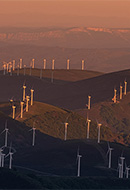
Electrification
Find out how it contributes to each sector and why it is key to tackling climate change.
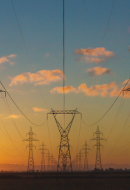
The IEA heralds the ‘Age of Electricity’
It has launched a report that emphasises the role of electricity in the new energy scenario.









